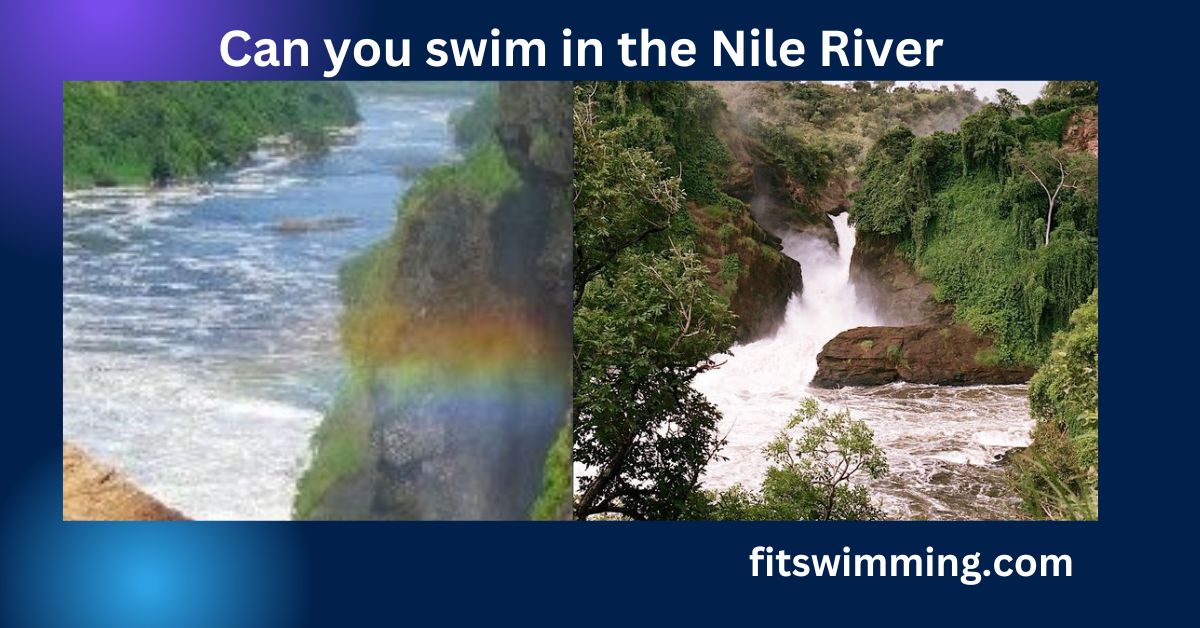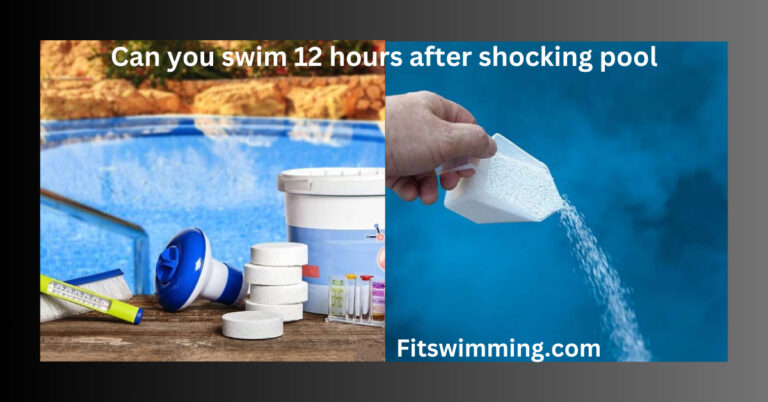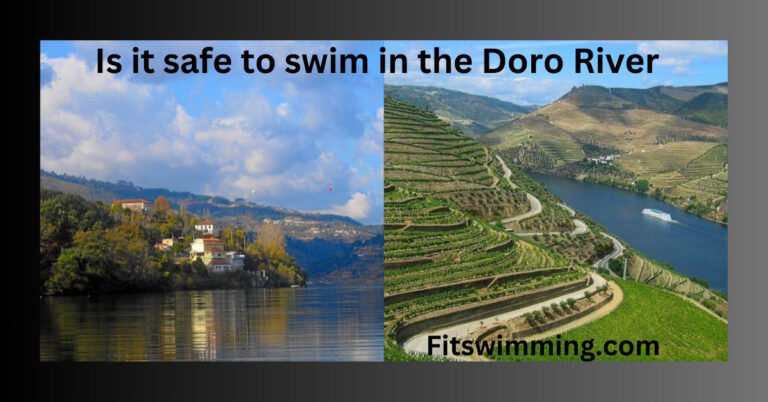Can You Swim in the Nile River? Dangers
Are you curious about taking a refreshing swim in the mighty Nile River? The idea of immersing yourself in this legendary waterway may seem enticing, but it’s essential to be aware of the potential dangers that come with it. In this blog, we deeply explore the question, “Can you swim in the Nile River?“
We will investigate the hidden risks you need to know. We discover the truth behind strong currents, unpredictable water, and hidden dangers in the Nile River. Join us as we navigate the hazards and unveil the reality of swimming in the Nile River. Safety should always be a priority, so let’s dive into this eye-opening exploration together.
Can You Swim in the Nile River?
The Nile River is an impressive waterway that stretches across northeastern Africa. It is widely considered to be the longest river in the world, with a length of approximately 6,650 kilometers (4,130 miles).
Geographically, the Nile River flows through eleven countries, including Egypt, Sudan, Ethiopia, Uganda, and Tanzania, among others. Its source is located in Lake Victoria, which is situated in Tanzania, and it meanders northwards, ultimately emptying into the Mediterranean Sea in Egypt.
It’s a common question that people ask. The answer isn’t straightforward; it’s not just a simple yes or no. The Nile River is a big and important river, but it’s not always safe for swimming. We should know a few things. The Nile River has strong currents and unpredictable water conditions, which can be dangerous. There might also be harmful animals like crocodiles or parasites in the water. We need to consider its water quality. The Nile River may have pollution, which can be dangerous for your health if you swim in it. You should stay safe and take precautions if you decide to swim in the Nile River.
Now let’s discuss the risks and potential dangers of Nile River swimming.

Potential Dangers and Risks Associated with Swimming in the Nile River
A question arise in people’s mind “Is the Nile River dangerous.”
Swimming in the Nile River can pose several potential dangers and risks. Here are some of the main concerns:
Strong currents
The Nile River is known for its powerful currents, especially in certain sections. These currents can be unpredictable and challenging to navigate, making swimming risky, even for experienced swimmers.
Water depth
The Nile River can have varying depths, and some areas can be quite deep. This can make swimming dangerous, especially if you are not familiar with the river’s specific depth patterns or underwater terrain.
Hazards and obstructions
The River might contain hidden hazards such as rocks, logs, or debris that are not easily visible from the surface. Colliding with these objects while swimming can lead to injuries.
Aquatic life
In certain parts of the Nile River, there may be wildlife that poses a threat to swimmers. For example, crocodiles are known to inhabit some sections of the river, especially in Egypt and Sudan.
Water quality and pollution
The Nile River can face challenges regarding water quality, particularly in densely populated areas. If you swim in polluted water, you are more likely to get sick or come into contact with harmful things.
Waterborne diseases
In some regions, the Nile River may carry waterborne diseases or parasites. These can pose health risks to individuals who swim in the polluted water. It is crucial to be informed about any prevalent diseases or health advisories in the specific areas where you plan to swim.
Swimming in the Nile River can Present Health and Sanitation Issues
Swimming the Nile can present health and sanitation issues due to various factors. Here are some key considerations:
Waterborne diseases
The Nile River, particularly in certain areas, may carry waterborne diseases. These illnesses can happen because of tiny living things like bacteria, viruses, or bugs that are in the water. Examples include gastrointestinal illnesses like diarrhea, cholera, or schistosomiasis (also known as bilharzia). It’s really important to know about the diseases that are common in that area and take the necessary steps to stay safe.
Pollution
The Nile River can face pollution challenges, especially in urbanized or densely populated areas. Industrial waste, agricultural runoff, sewage, and other pollutants can find their way into the river, affecting water quality. If you swim in dirty water, you are more likely to get rashes, infections, or come into contact with harmful things.
Hygiene facilities
Along certain sections of the Nile River, the availability of proper hygiene facilities such as toilets or changing rooms might be limited. This can make it challenging to maintain good personal hygiene before and after swimming, potentially increasing the risk of infections.
Water treatment
In some locations, the water treatment infrastructure may be inadequate, leading to a lack of effective water purification processes. This can impact the overall cleanliness and safety of the water for swimming purposes.
To mitigate health and sanitation issues while swimming in the Nile River, consider the following precautions:
Obtain up-to-date information on water quality and any prevalent diseases or health advisories in the specific area you plan to swim.
Alternate Water Swimming in the Nile River
Here are some bullet points highlighting alternative water activities near the Nile River:
Boat tours
Enjoy the beauty of the Nile River by taking a boat tour. Various options, such as traditional feluccas or motorized boats, allow you to explore the river and its surroundings while staying safe and dry.
Kayaking and canoeing
Experience the thrill of paddling along the Nile River with kayaking or canoeing. These activities offer a closer connection to the water while providing a sense of adventure and exploration.
Stand-up paddle boarding
Try stand-up paddle boarding to test your balance and strengthen your core. Glide along the calm sections of the Nile River, enjoying a unique perspective of the scenery.
Swimming pools
Many hotels and resorts near the Nile River offer swimming pools as a safe and controlled environment for swimming. Enjoy a refreshing swim in these designated areas with the added convenience of amenities and services. Riverbank relaxation: Instead of swimming directly in the Nile River, you can still appreciate its beauty by relaxing on the riverbank. Find a comfortable spot, soak in the views, and enjoy a picnic or sunbathing while staying on land.
Is it Safe to Drink from the Nile River?
No, It is generally not safe to drink water directly from the Nile River without proper treatment or purification. The water quality of the Nile River can vary significantly along its length, and it is prone to pollution from various sources, including industrial waste, agricultural runoff, and human activities.
The Nile River can contain harmful bacteria, parasites, and other contaminants that can cause waterborne diseases and pose health risks. Drinking untreated water from the Nile River can lead to gastrointestinal illnesses and other health complications. Read more about swimming with stitches.
Conclusion: Can You Swim in the Nile River? Dangers
In conclusion, swimming in the Nile River is not a straightforward decision. While the river’s length and historical significance capture our imagination, we must know the potential dangers and risks involved. Factors such as strong currents, unpredictable water conditions, aquatic life, water pollution, and waterborne diseases must be considered before taking a swim. It’s crucial to prioritize safety and health when deciding whether or not to swim in the Nile River.
FAQ’s
Swimming in the Nile River is generally not recommended due to various factors that can affect water quality and safety. The river can contain pollutants, bacteria, and parasites that may pose health risks to swimmers.
Upstream and away from densely populated areas, the water can be relatively clean. However, as the river passes through urban areas and agricultural regions, it can become polluted due to the discharge of industrial waste, agricultural runoff, and untreated sewage.
The River Nile is primarily a freshwater river. It is one of the longest rivers in the world, stretching across multiple countries in Africa. The water in the Nile is mainly sourced from rainfall and highland areas, making it freshwater.
Swimming in the Nile River can potentially expose you to various waterborne diseases, including but not limited to parasitic infections like schistosomiasis (also known as bilharzia).
The water in the Nile River is typically a murky or muddy brown color.







